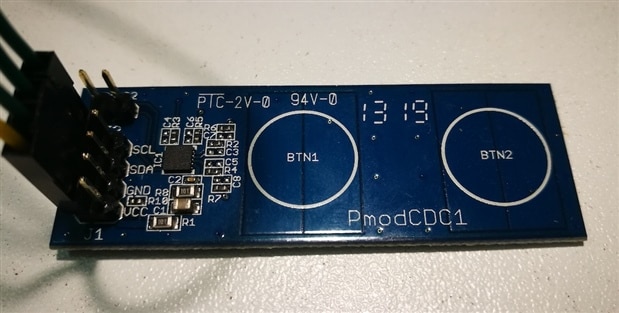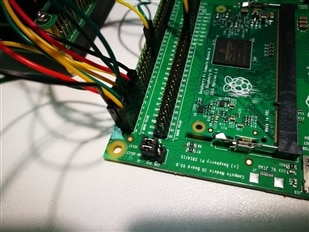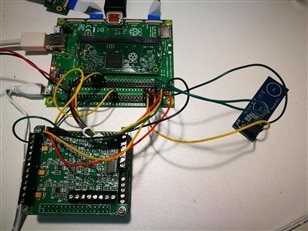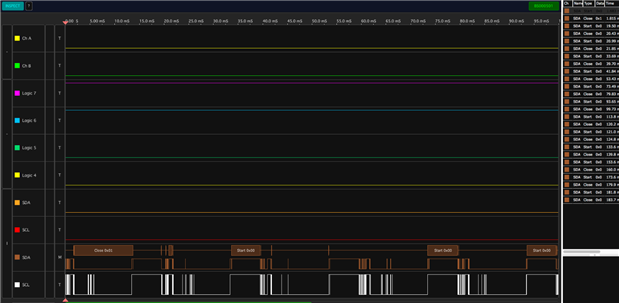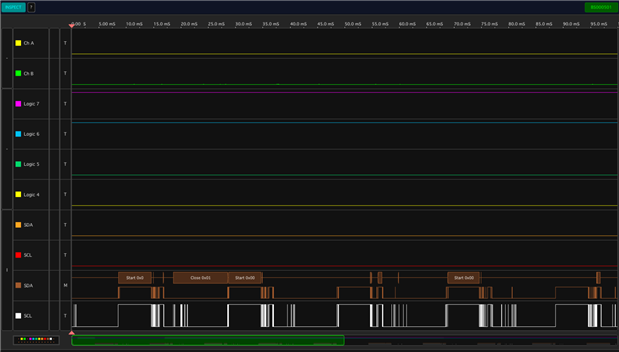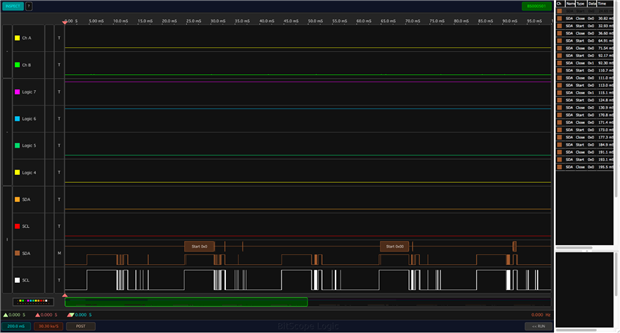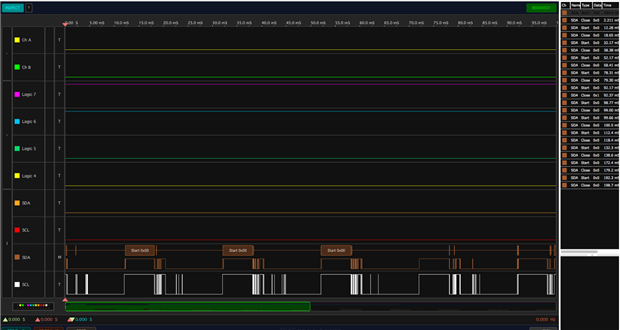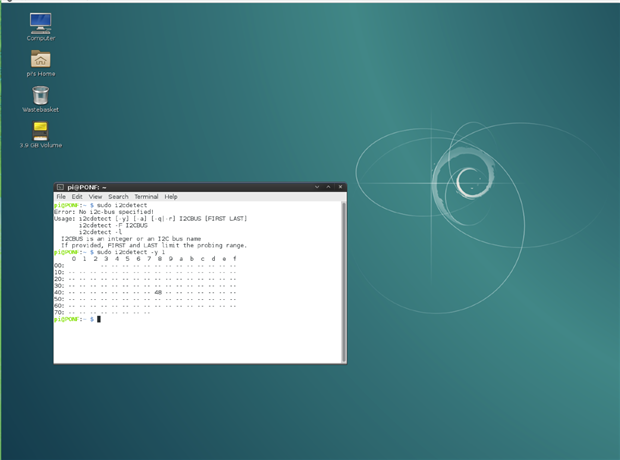This is a strange issue I have no idea how to solve; it seems I am unable to debug correctly the problem to find at least what class of issue it is.
I have tried several I2C devices set as slave including Infineon XMC1100 Boot KitXMC1100 Boot Kit and Arduino UNOArduino UNO. Then I moved to the simple two cap sense buttons PmodCDC1PmodCDC1 by Digilent; as the device is powered and connected to the I2C bus it starts in continue sending data. I should expect to see at least its address will be detected by the CM3 I/O board but nothing happens.
I2C has been set and enable correctly in /boot/config.txt and the raspbian version running on the eMMC of the CM3CM3 is the latest Jessie (July, 5 , 2017). Signals are connected to the GPIO2 and GPIO3 (SDA1, SCL1) accordingly with the eLinux table specifications (see in attach) to the GPIO Pins 2 and 3. Digilent device is powered with the 3V3 and voltage is correct and stable.
I have not used external pull-up resistors on SDA/SCL signals as the CM3 already includes 1.8K pull-up resistors on these two lines, following the CM3 peripheral recommendations.
Initially I though that it was possible that wrong resistor values was blocking the signals to go up but as shown in the video below, hardware seems working fine. Note that when I send a i2cdetect -y 1 command from the terminal data are sent by the CM3 side. But nothing is shown.
Any suggestion is welcome.
Update
Supposing that despite what the documentation says the internal pull-up resistor is not enabled I have added a 1.5K resistor pulled up to the 3V3 (the nearest I have at home respect the declared in the documentation (1K8). What I get with the protocol analyser is a series of packets as shown in the images below but always nothing is detected by the master (Pi side).
Last update
After trying and discussing with all the helpful members that spent time with me I have received in the meantime a second Pi Compute Module IO board and as all the suggested tests and possible mistakes was converging to the right setup for the I2C protocol, as expected, the problem was for some unknown reason the board itself. As I replaced the board with a new one things started working perfectly.
Thanks to shabaz Robert Peter Oakes rew Jan Cumps and... johnbeetem for the useless suggestion of the thread  LoL
LoL
Update
After the last testing and following some suggestions of the starting supposition is that - together with the I/O board - also the Compute Module 3 booting from the eMMC maybe with some hardware failure as all the tests with the Compute Module 3 Lite booting from the eMMC is working fine with the same Raspbian distribution, desktop version (instead of headless like on the eMMC side).
First test: a new microSD with the Raspbian Jessie Lite has been set and after booting the Compute Module 3 Lite I have done the same setup of the Compute Module eMMC. At this point bot boards runs the same version. And after sudo update / upgrade the command i2cdetect -y 1 works perfectly! So we can think 90% sure that the issue is in the Compute Module 3 with eMMC memory. Remain a last test to see if this issue is systematic or not: flashing another Compute Module 3 eMMC and see if it work.
Update - Conclusion
After doing the test mentioned in the update above a new Compute Module 3 eMMC board has been setup with a fresh installation and with the same connections of the previous settings, same Jessie Lite July 2017 and I2C protocol worked immediately without problems. So, the main issue was the CM3 eMMC board and the I/O board kit.
XMC1100 Boot Kit + TLE94112LE I2C communication
The setup of the two boards (XMC1100 + TLE94112LE) connected to the CM3 via the I2C bus was creating a trouble on the bus signals so that the i2cdetect -y 1 command was no longer able to recognise any connected peripheral.
The board has been configured as slave on the address 0x04. A check with the same software and the same hardware setup using and Arduino UNO instead was working fine. Investigating on this issue I have found the problem was already known involving Wire library version for the XMC1100 board updated by mhollfelder on the Infineon XMC1100 GitHub repository, the Pull Request #13.
On Aug, 31, 2017 Manuel (thanks) completed the update of the pull request, merged in the main and released a new XMC1100 Arduino board core library version 1.0.4 (the module downloadable / upgradable in the Board Manager of the Arduino IDE) and all worked fine with the Infineon board alone connected to the I2C bus.
As I have integrated the XMC1100 Boot Kit board with the TLE94112LE DC Motor controller I have included the the TLE94112 Arduino library in the sketch detecting another non-blocking issue in the I2C Wire library (XMC1100 version) and opened the issue #14
The behaviour details are explained in the issue note; the problem can be easily avoided initialising the Wire library as the last call in the Setup() method of the sketch ;twe can consider this the workaround to the problem until it is not definitely solved.






